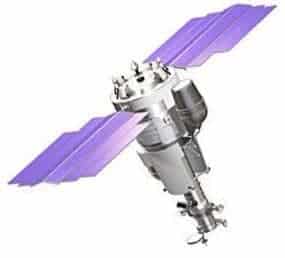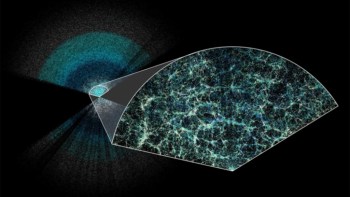
Contradictory results from experiments searching for dark matter can be resolved if the elusive dark stuff is made up of two types of particle, according to physicists in the US.
The new theory could clear up a mystery that came to light in 2008, when the PAMELA collaboration released one of the strongest pieces of evidence yet for the direct detection of dark matter – a substance thought to make up over 80% of the universe’s matter. PAMELA saw a bump in the abundance of cosmic anti-electrons, also known as positrons, thought to be generated as dark-matter particles annihilate. But there was no concordant signal for anti-protons, which should also be generated by the annihilation.
That isn’t the only problem. If the PAMELA signal was indeed evidence for annihilation, the dark matter involved would be of a type that would never show up in direct-detection experiments, such as CDMS-II, located in a mine in Minnesota, US. But in recent years CDMS-II and other direct detection experiments have found their own hints of dark matter.
Lurking in the ‘hidden sector’
Now Daniel Feldman at the University of Michigan and colleagues at other US institutions think that they have found a way to join up these mismatching signals. They say that dark matter could be made up of two types of particle – one conventional particle, which would show up in direct-detection experiments, and one “hidden sector” particle, which would explain the PAMELA signal. “I think that we have the first model with which we are able to explain essentially all of the current dark-matter data,” says Pran Nath, one of Feldman’s co-authors based at Northeastern University in Boston.
I think that we have the first model with which we are able to explain essentially all of the current dark-matter data Pran Nath, Northeastern University
Dark matter is thought to interact only through gravity and the electroweak force, so one of the most popular candidates is so-called weakly interacting massive particles, or WIMPs. But in recent years some researchers have begun to look past the WIMP hypothesis in favour of more complex ones, in response to experiments giving mismatching evidence.
When two WIMPs annihilate, for example, they should produce two bosons, which decay into either electrons and positrons, or protons and anti-protons. PAMELA, a satellite orbiting Earth, only witnessed one side of this process – the electron and positron side – which suggests either its signal is faulty, or something is not quite right with the theory.
Tantalizing hints
One reason to think that theory might be lacking comes in the data from direct-detection experiments, which typically look for the recoil of atoms as WIMPs collide into them. For years the DAMA collaboration based in Italy has claimed evidence of this sort, and recently the collaborations CDMS-II and CoGeNT have flagged up their own tantalizing hints. But these signals do not match the WIMP signal seen by PAMELA – indeed, if the PAMELA signal is real, according to the standard WIMP hypothesis, the direct detection experiments should see nothing.
Feldman, Nath and colleagues’ theory explains how PAMELA and the direct-detection experiments could both find evidence for dark matter. They propose a type of multi-component dark matter that consists of two very different particles. One of these would be a conventional WIMP – a neutralino, predicted in supersymmetric extensions to the Standard Model of particle physics. The neutralino is a “Majorana” particle (which means it is its own anti-particle) and produces very little antimatter upon annihilation, but would produce nuclear recoils in direct-detection experiments.
The other particle would be an unconventional, hidden-sector WIMP. The hidden sector is an addition to the Standard Model that involves different particles and forces to those known to exist today. The US group thinks that a hidden-sector “Dirac” particle (which has a separate anti-particle) would be able to decay into positrons after annihilation but not anti-protons, and would therefore explain the PAMELA signal.
Testability is a benefit
Joe Silk, a cosmologist at Oxford University, UK, thinks the study is one of numerous others that have attempted to explain the mismatching dark-matter signals, but notes that it does benefit from being testable. “Any annihilation-type model that fits the PAMELA data must give a large flux of high-energy electrons and positrons in the early universe when the density of dark matter was much higher than today,” he says. This, he adds, would “mess up” the universe’s early period when electrons and protons first combined into neutral hydrogen atoms, and should therefore show up as fluctuations in the cosmic microwave background (CMB) radiation.
Such fluctuations might be too small to notice with WMAP, the satellite that has provided most information to date on the CMB. But the Planck observatory, which launched into orbit last year, will be able to search in far more detail. Only then, it seems, might we get a hint of whether dark matter is as complex as Feldman, Nath and others think it is.
The research is published in Phys. Rev. D.
Join Physics World‘s Matin Durrani on a trip down Boulby Mine, where physicists are searching for dark matter, in “Deep exploits – the quest for dark matter”.



